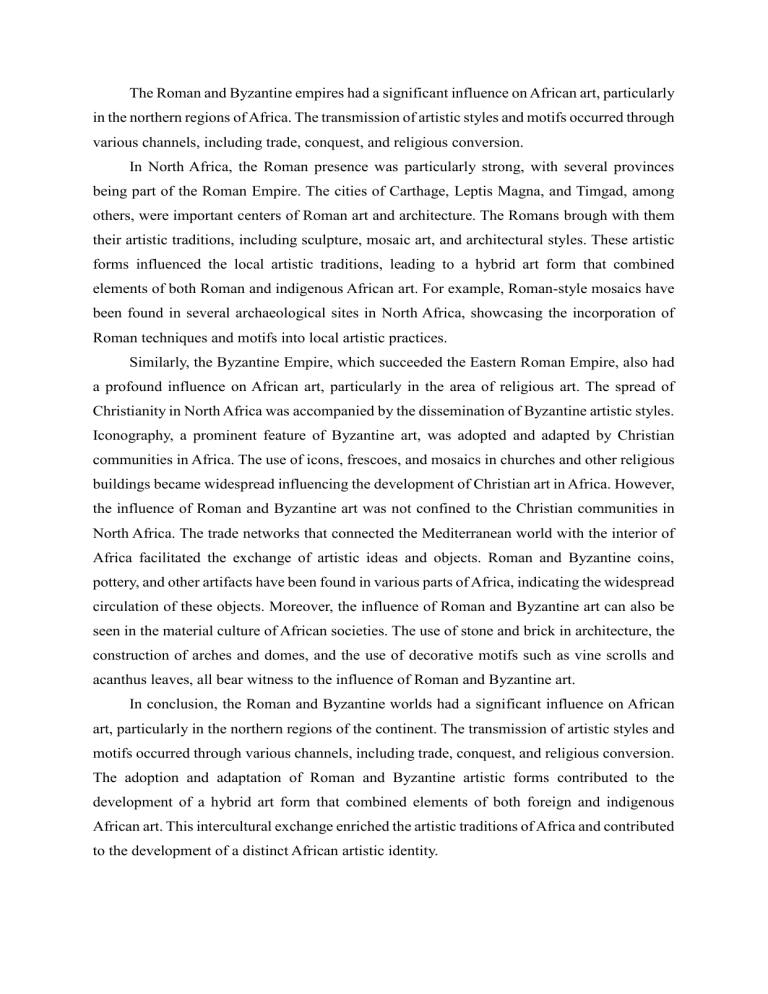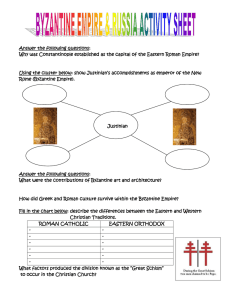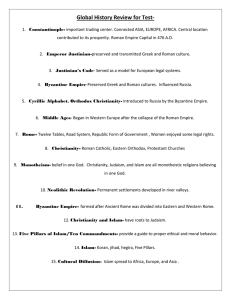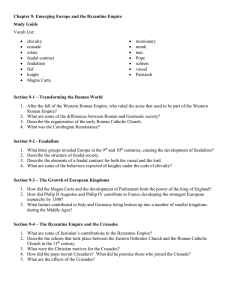
The Roman and Byzantine empires had a significant influence on African art, particularly in the northern regions of Africa. The transmission of artistic styles and motifs occurred through various channels, including trade, conquest, and religious conversion. In North Africa, the Roman presence was particularly strong, with several provinces being part of the Roman Empire. The cities of Carthage, Leptis Magna, and Timgad, among others, were important centers of Roman art and architecture. The Romans brough with them their artistic traditions, including sculpture, mosaic art, and architectural styles. These artistic forms influenced the local artistic traditions, leading to a hybrid art form that combined elements of both Roman and indigenous African art. For example, Roman-style mosaics have been found in several archaeological sites in North Africa, showcasing the incorporation of Roman techniques and motifs into local artistic practices. Similarly, the Byzantine Empire, which succeeded the Eastern Roman Empire, also had a profound influence on African art, particularly in the area of religious art. The spread of Christianity in North Africa was accompanied by the dissemination of Byzantine artistic styles. Iconography, a prominent feature of Byzantine art, was adopted and adapted by Christian communities in Africa. The use of icons, frescoes, and mosaics in churches and other religious buildings became widespread influencing the development of Christian art in Africa. However, the influence of Roman and Byzantine art was not confined to the Christian communities in North Africa. The trade networks that connected the Mediterranean world with the interior of Africa facilitated the exchange of artistic ideas and objects. Roman and Byzantine coins, pottery, and other artifacts have been found in various parts of Africa, indicating the widespread circulation of these objects. Moreover, the influence of Roman and Byzantine art can also be seen in the material culture of African societies. The use of stone and brick in architecture, the construction of arches and domes, and the use of decorative motifs such as vine scrolls and acanthus leaves, all bear witness to the influence of Roman and Byzantine art. In conclusion, the Roman and Byzantine worlds had a significant influence on African art, particularly in the northern regions of the continent. The transmission of artistic styles and motifs occurred through various channels, including trade, conquest, and religious conversion. The adoption and adaptation of Roman and Byzantine artistic forms contributed to the development of a hybrid art form that combined elements of both foreign and indigenous African art. This intercultural exchange enriched the artistic traditions of Africa and contributed to the development of a distinct African artistic identity.






